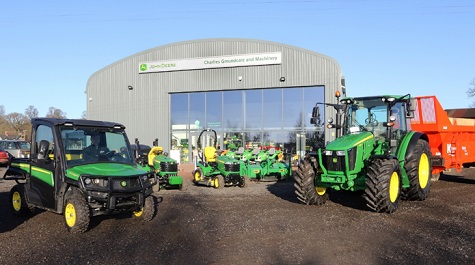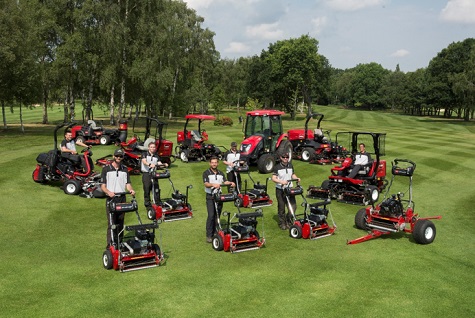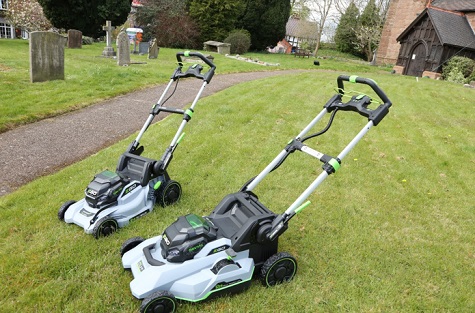
In the first of this series of articles, we sought to get a clearer definition of what sustainability is and what it means to an organisation, especially in the amenity horticulture sector. Sustainability comprises three pillars or components namely economic viability, environmental protection and social equity. The definition of these is important when any organisation seeks to become more sustainable, or indeed seeks to deliver more sustainable products and services to its customers. The remaining articles on this subject will now look more closely at various sub sectors of, and activities in amenity, and those providing services to them which hopefully will help all readers in their own search for sustainability. This month we start with a particular focus on the supply and use of machinery in the sector.
Currently, manufacturers and indeed distributors face a long list of difficult supply chain challenges, exacerbated by the impact of the pandemic and the war in Ukraine.
Such challenges include environmental regulations, intense competition, market demand and lack of labour, both in terms of availability and skills. Added to that is the effect of climate change and increased energy costs which pose real problems. In such circumstances, seeking transparent and robust supply chains are an absolute must have, to ensure competitiveness, and sustainability is critical in a world where customers and public increasingly put more emphasis on such solutions.

So firstly, it is worth a brief look at this from the customer angle, for example a golf course buying equipment or indeed any organisation in similar circumstances. Looking at the first pillar of sustainability, clearly when sourcing equipment, best value is top of the list. This is a combination of price and quality but must be backed up with after sales service and training and hopefully commitment to sustainability.
Another key question is whether the equipment is up to the job, something we will return to later in this article. Discussions with a local authority customer, recently purchasing, emphasised that in addition to the above, they were seeking the supplier to demonstrate that environmental management was at the core of their business as well as re-cycling both in in manufacture and distribution, with disposal of equipment in a socially responsible manner. They sought full consideration to the carbon foot printing of both manufacture and supply as like most such bodies, they had carbon reduction targets set across all their activities. Clearly at the end of the day, price is important but very much high on the scales today is sustainability. This is both in response to public demand as well as making good business sense.

So how should those supplying equipment respond? The manufacturing sector is one of those that is subject to a lot of scrutiny, thanks to the input and output of materials and potential waste that is created in the process. However, the response to the changed agenda has been marked in recent times. Whilst some, especially the larger organisations, have embarked upon major change, others have taken smaller steps. So what can be the advantages of taking a sustainable approach to those who supply equipment? Some are listed below.
Lower costs:
One of the most appealing benefits to embracing sustainable manufacturing is the way that it can lower costs. It may begin with using cheaper renewable energy, to offset the use of more expensive traditional sources, or relying on smarter technology to better regulate energy consumption. Whilst there may be some upfront investment needed to make the change, pay back can be short. A smaller specialist manufacturer told me of small changes made by him, such as changing to more efficient lighting in the workshop and re-cycling second hand parts and materials such as wood crates and cardboard packaging. Sustainable practices can provide more efficient use of materials and, with less waste to deal with, disposal costs also decrease. There may also be grants or other incentives in going green.
Market Edge:
Demonstrating your sustainability credentials improves company image and can certainly help sales. More people are placing value in green practices due to their concerns about the environment.
New market opportunities:
Sustainable practices can also help gain access to new markets. For example, the government has set greening government commitments , one of which is to “continue buying greener products and services”. This means that they have set out to do business with the most sustainable and efficient companies.
Happier and more productive staff:
Commitment to sustainability demonstrates being socially responsible, doing what it can to protect the environment and its employees, who are likely to benefit from higher morale working for a business that has demonstrated that it is socially responsible — doing its bit to protect the environment and its employees. A recent survey indicated that employees in companies that voluntarily adopt green practices and standards have been found to be more productive.
There are many ways that an organisation, can change its processes to make it more sustainable, some very simple and others more complex. A possibly good starting point is to undertake an energy survey. Again this need not be complex. Once you have identified opportunities for a more sustainable approach, you can start with the quick wins. Making small changes to begin with can often have an immediately positive effect. This might be swapping outdated incandescent lightbulbs with new CFL or LED models which are more efficient and have a longer life span. Other changes might be upgrading insulation to improve heating efficiency. This can be linked to programmable thermostats giving more control and seeking to minimise energy use when not needed. For the distributor, specialist computer software can aid route planning and reduce mileage.

Moving to the next level, are decisions about the source of power and the potential for renewables. Power sources like wind and solar are cleaner and can reduce bills when compared to those sourced exclusively from traditional fossil fuels. Of course this may not be a viable option for many but always worth investigation. Also, as mentioned earlier, an effective way of improving sustainability is minimising waste. The first step is to review processes and pick out any factors that are causing unnecessary surplus or by-products, also to investigate potential for re-cycling waste. Is there any way to avoid sending it to landfill, such as recycling or using it in a new type of product? Can your waste be utilised by another business? One business talked to has a tree surgeon based on site who is now utilising wooden crates and turning them into firewood.
Then, of course, there is a need to review power sources for own machinery and products supplied to customers. In recent years the growth of electric vehicles and equipment has been striking and generally welcomed. Of course it may not be the right move in all circumstances and some argue that hydrogen power is likely to be the solution eventually. A recent report designed by TAP and TurfPro identified the tools and equipment used by ground care professionals, probed their attitudes, and explored how they believe the industry is addressing opportunities / challenge of climate change. The report is available free and two key highlights were:
In his commentary and analysis of the report, Laurence Gale, Editor of TurfPro said, "Having an awareness of what’s going on around you and knowing what resources you have at hand will enable you to make the right call and deliver the expectations of your clients and customers." Whilst the move to electric power increases and the technology continues to improve, there remains many in the sector who still have questions. Will the equipment required still be up to the job, will the national grid be able to sustain the increased demand for re-charging equipment and the future in terms of battery production.
Sustainable practice is something nobody can ignore and all organisations, whatever their size, can play a part. It is a dynamic area– just look at the offer on display at the recent SALTEX and BTME events. It was difficult to chat at any stand without the subject coming to the fore. The challenge is not to over complicate. To use a quote from Marian Wright Edelman, “If you don’t like the way the world is, you change it…one step at a time.”
The next article in this series will look more closely at sustainable turf management and what this means in practical terms to those at the sharp end seeking to provide quality fit for purpose surfaces, the green keeper and the park manager. Further on in the series we will look at those who supply products such as seed, fertiliser and plant protection products and how they too are developing more sustainable solutions and putting sustainability into practice.